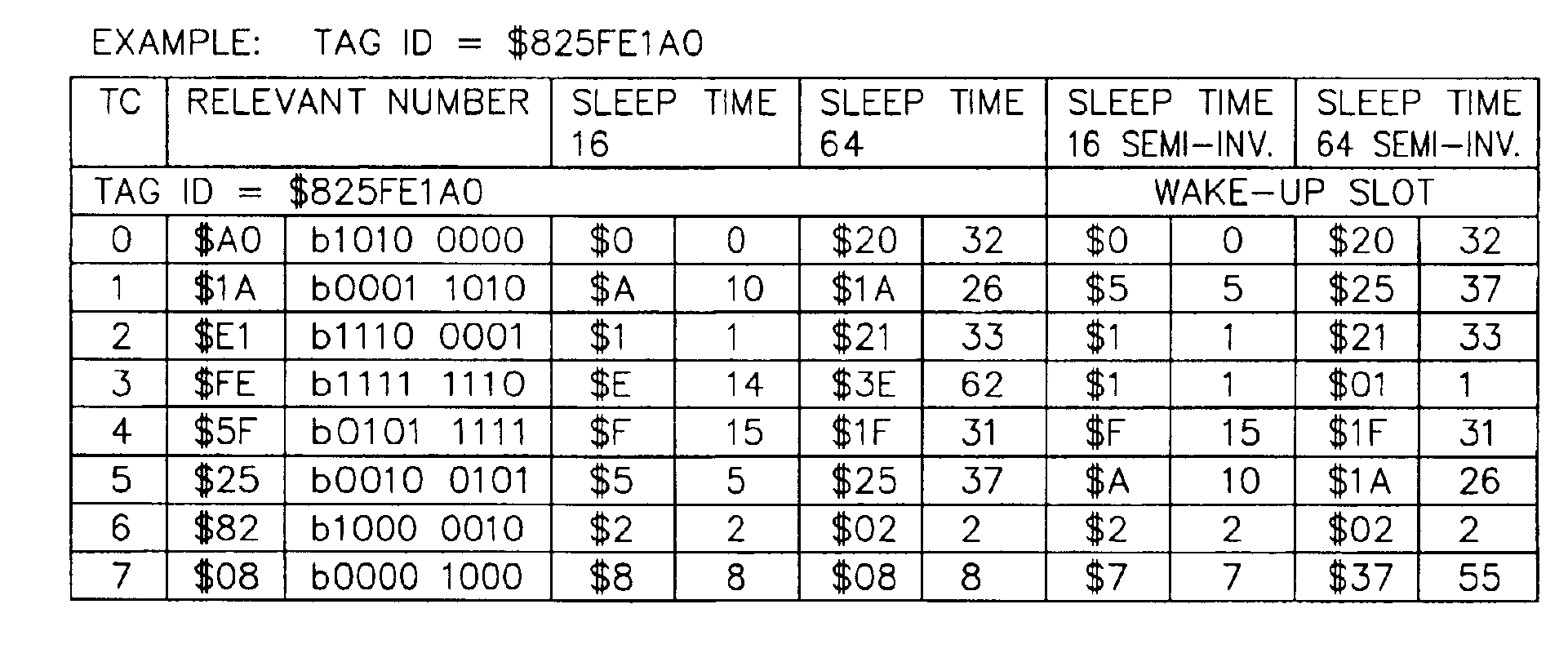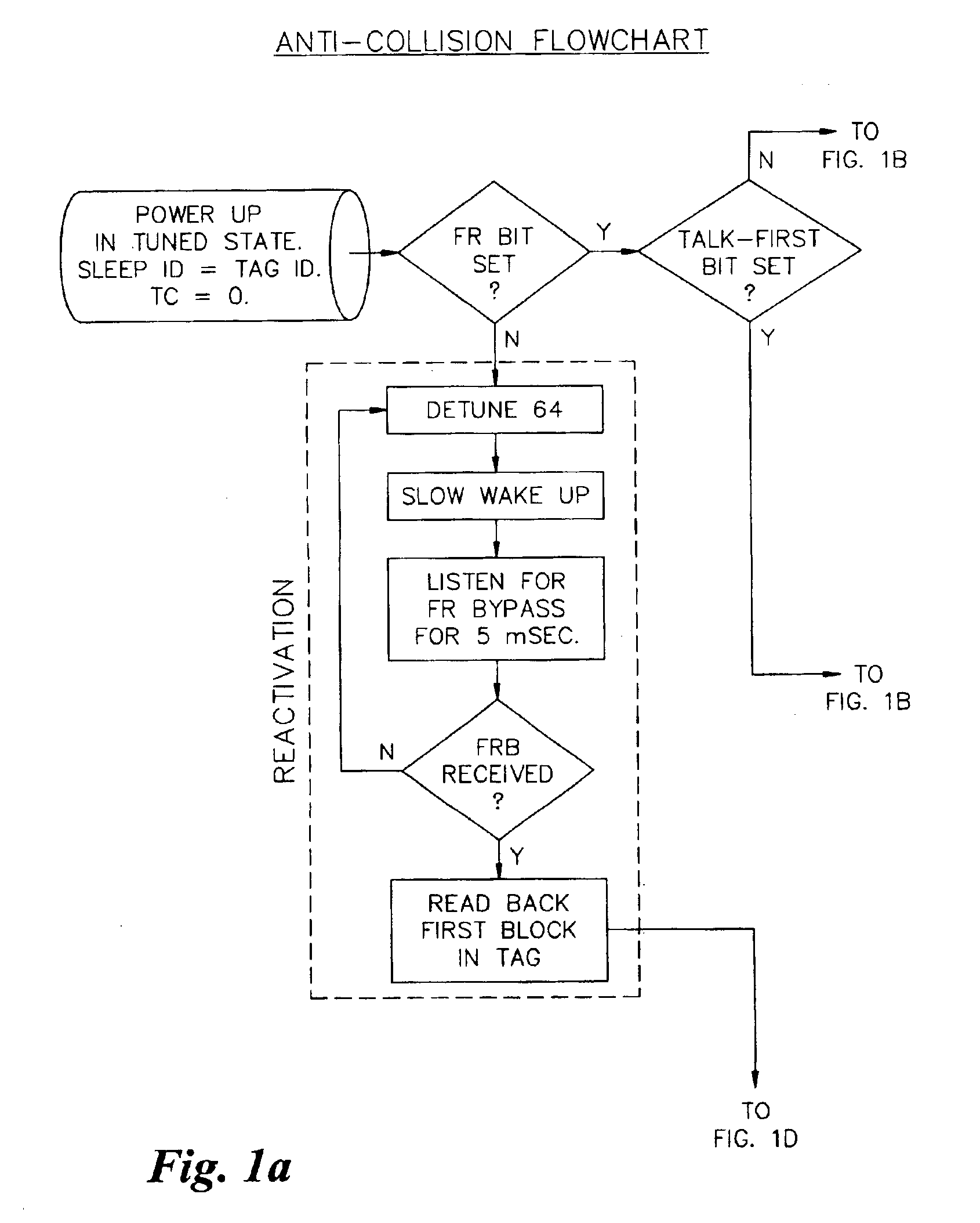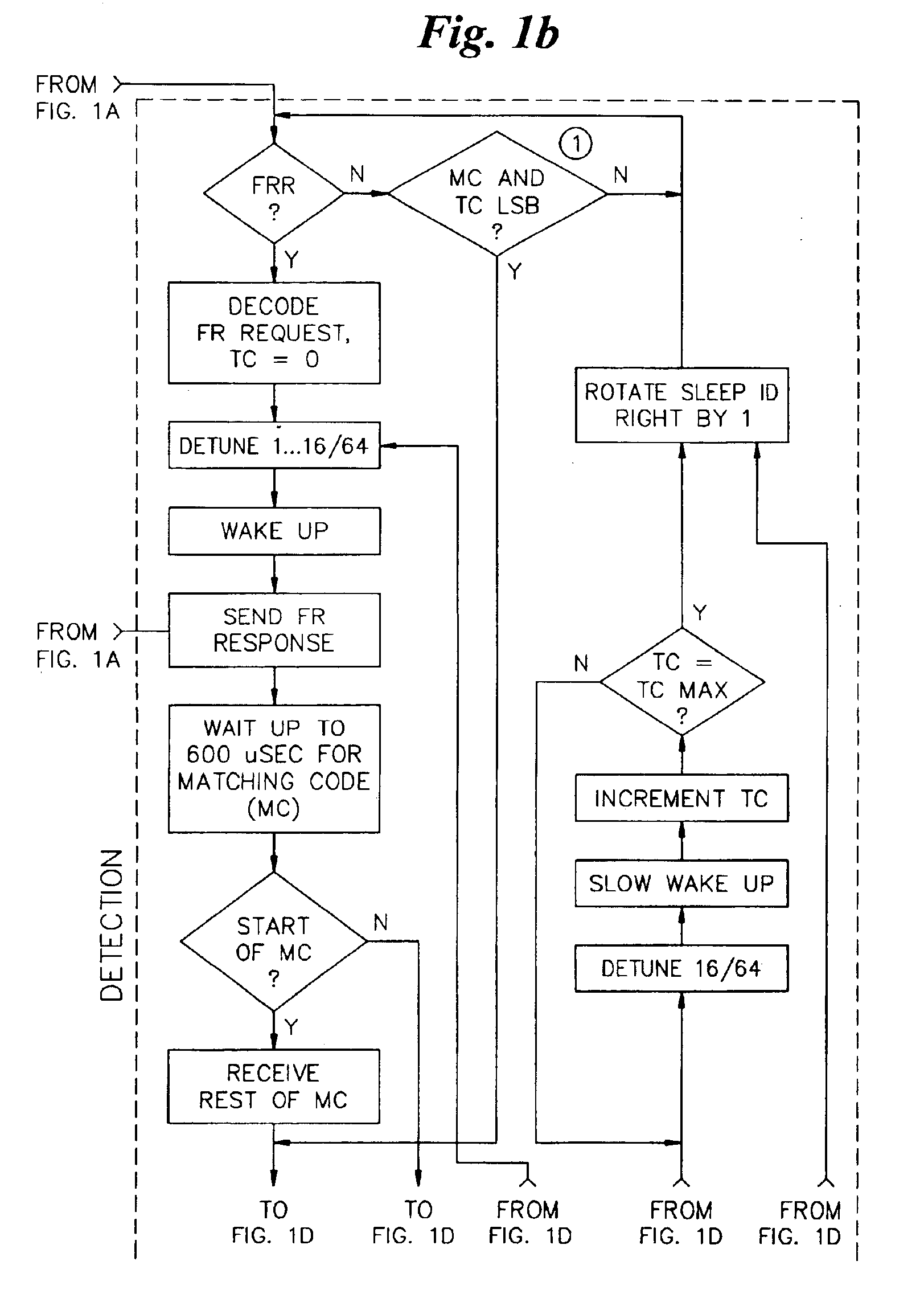Anticollision protocol with fast read request and additional schemes for reading multiple transponders in an RFID system
a technology of rfid system and read request, applied in the field of anti-collision, can solve the problems of increasing the cost of tag chip and tag, preventing the reader from obtaining the desired information, and corrupting information, so as to eliminate all communication overhead
- Summary
- Abstract
- Description
- Claims
- Application Information
AI Technical Summary
Benefits of technology
Problems solved by technology
Method used
Image
Examples
Embodiment Construction
[0024]Certain terminology is used herein for convenience only and is not to be taken as a limitation on the present invention. In the drawings, the same reference numerals are employed for designating the same elements throughout the several figures.
[0025]FIGS. 1A-1D, taken together, show a detailed data flowchart of the anticollision protocol in accordance with a preferred embodiment of the present invention. The protocol has five major parts, including reactivation, selection, inactivation, detection and processing. The specific details of each part are self-explanatory, and thus are not described in further detail herein. The description below also further explains the individual parts.
TRANSMISSION PERIOD / TRANSMISSION CYCLES
[0026]In the present invention, tags respond to a tag read request from a tag reader. Referring to FIG. 2, the total time of a tag response is a tag transmission period. Each transmission period has a plurality of consecutive tag transmission cycles, each tran...
PUM
 Login to View More
Login to View More Abstract
Description
Claims
Application Information
 Login to View More
Login to View More - R&D
- Intellectual Property
- Life Sciences
- Materials
- Tech Scout
- Unparalleled Data Quality
- Higher Quality Content
- 60% Fewer Hallucinations
Browse by: Latest US Patents, China's latest patents, Technical Efficacy Thesaurus, Application Domain, Technology Topic, Popular Technical Reports.
© 2025 PatSnap. All rights reserved.Legal|Privacy policy|Modern Slavery Act Transparency Statement|Sitemap|About US| Contact US: help@patsnap.com



